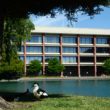FAIRFIELD — After the major economic downturn in 2008, local school district’s were forced to make critical cut in services for many school years.
Now, with an improved economic forecast, the Fairfield-Suisun, Vacaville and Travis school districts have all regained much of what was lost in those years and are looking forward to years of coming growth.
Fairfield-Suisun School District was able to replace some services that were cut under budget shortfalls, including middle school sports programs. Serving more than 21,000 students, the district felt the pinch from forced teacher layoffs as much as any district in the area during those tight budget times. However, through a series of job fairs and other employment events, the district was able to hire several teachers and add needed support staff.
The district continues to focus on expansion of new and existing academic programs, including their public safety academy, dual immersion courses, career academies, gifted programs and STEM programming.
Voters in the district did their part by passing a $249 million Measure J school facilities bond in June.
The Vacaville School District was bolstered by needed funds made possible through the 2014 passage of the $194 million Measure A facilities bond. The district’s student body has been steadily growing, with nearly 14,000 students. Measure A funds will help the district stay ahead of that projected growth.
Measure A funds, in phase one of the project, will help renovate a number of school sites, will allow the district to re-open the Sierra Vista site, add athletic facilities to Will C. Wood High, an expand Vacaville High with a new two-story building with 24 new classrooms.
One of the key areas of focus for Vacaville district is to accommodate student needs to the fullest extent possible. That includes development of transitional kindergarten and independent study options. The district is also investing in technology to help make these alternative education options as effective as possible, including the distribution of 3,500 Chromebook computers for student use in 2014-15 and another 3,500 Chromebooks in the 2015-16 school year.
As a smaller school district, the Travis School District experienced comparatively smaller cuts than their larger neighbors. However, those cuts were much more impactful. Travis has built back some of their severed services, like the other districts. However, their margin for loss is much narrower and district officials have closely monitored activity with the improving state budget.
While Travis is poised for student body growth in the future, they will likely have some enrollment losses in the short term, meaning the process of pulling out of the budget cut fog will take them longer than larger surrounding districts.
Though it seems like bad news, these budget worries have not translated to deficits in the classroom. The district’s continuously improving robotics program is recognized at both the state and national levels.
Travis also had a high number of students continue to four-year universities, with a growing number of those students attending college as the first in their families to do so.
The district’s conservative budget monitoring not withstanding, Vanden High School saw growth in the 2015-16 school year when a new library opened on campus, nearly quadrupling the size of the previous library.





